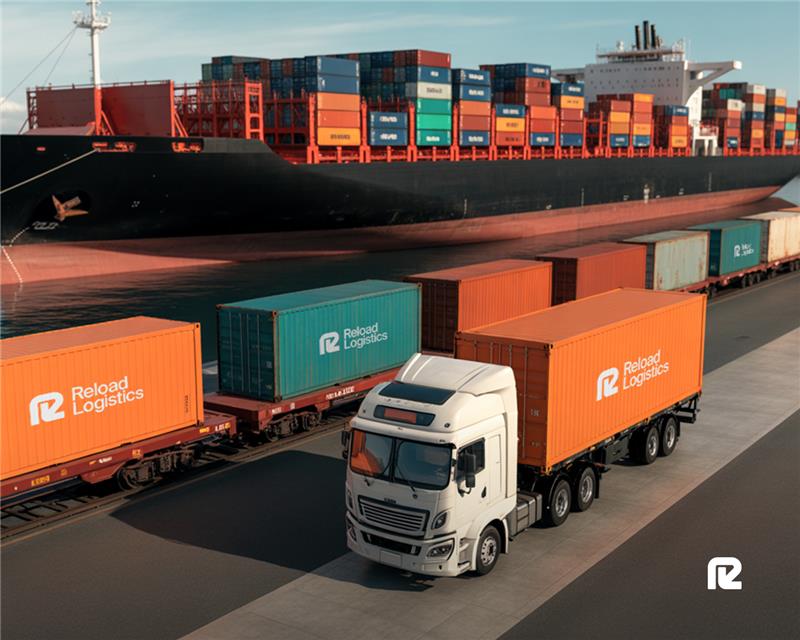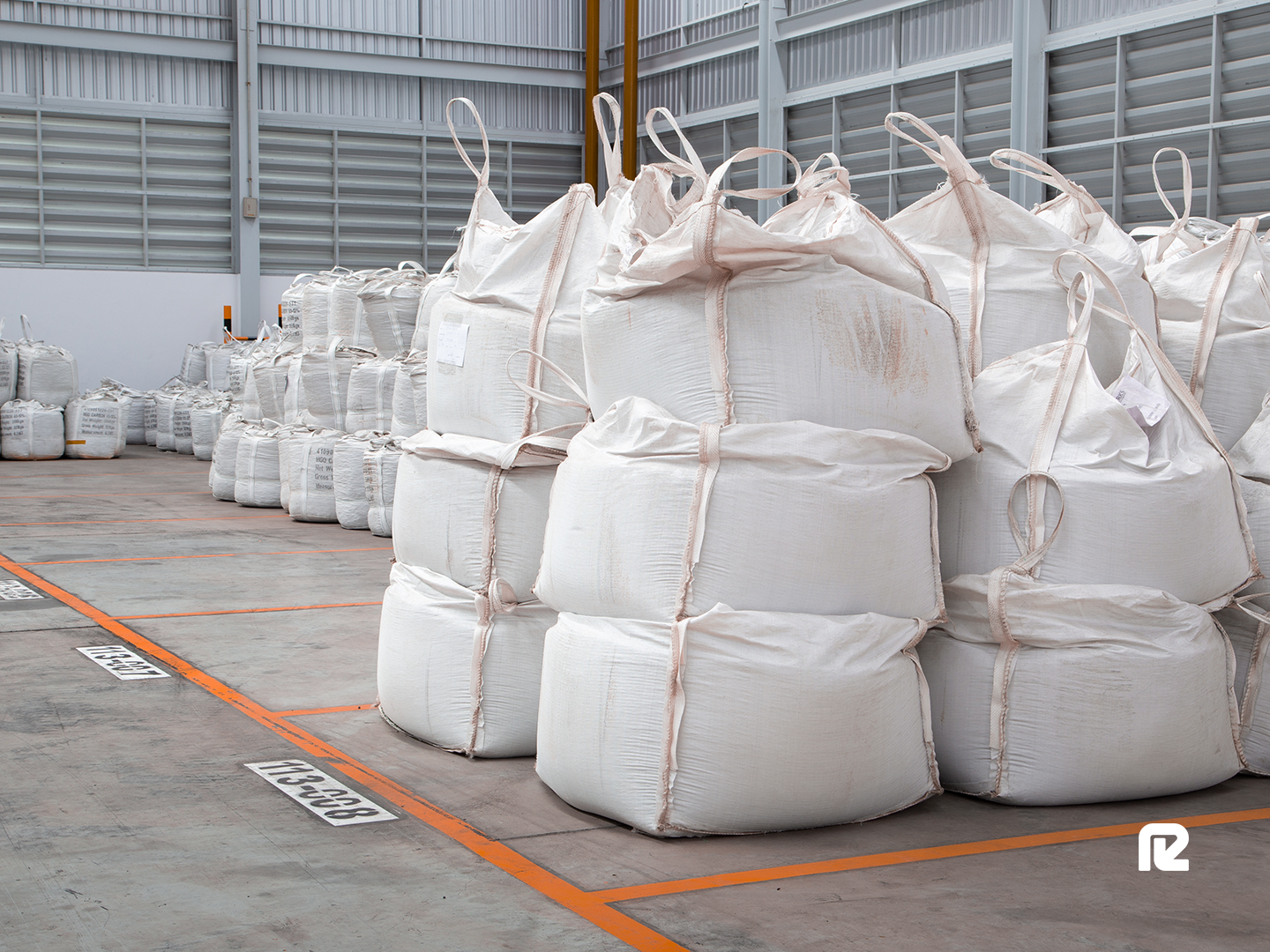Understanding Multimodal Shipping: How Integrated Transport Keeps Global Trade Moving


Businesses and shipping teams rely on multimodal shipping to connect inland manufacturing to global markets. Complex and long journeys are simplified by combining different modes of transport, as well as helping companies keep supply chains running smoothly from end-to-end.
Multimodal shipping links road, sea, rail, and air to move goods efficiently across borders and between major global ports. Whether exporting minerals or importing manufactured goods, multimodal shipping offers a faster and more resilient way to deliver cargo and results.
This article will look at multimodal vs intermodal shipping, the specific steps of multimodal shipping, and the advantages of using this method.
What Is Multimodal Transport?
Multimodal shipping, or multimodal transport, means utilizing two or more different modes of transport by combining either road, rail, sea, or air, under one single contract with one responsible operator or logistics provider.
A real-world example of multimodal shipping would be a mining company in Zambia that exports copper. The most efficient route involves three modes of transport:
• Road freight from the mine to a rail terminal
• Rail transport to the Port of Beira in Mozambique
• Ocean freight from Beira to the final destination
Logistics providers, like Reload Logistics, can coordinate these journeys under a single contract. This minimizes risk and saves time, making multimodal transport a competitive option across global markets.
Multimodal vs. Intermodal Shipping
While the two terms are often used interchangeably, multimodal and intermodal shipping are different approaches to combined transport.

Multimodal Transport: Offers a simpler, more secure structure with potential time savings due to the coordinated logistics. Uses one contract and the same transport carrier.
Intermodal Transport: More flexibility with costs and transport modes comes with more admin and logistics coordination. Uses several contracts and multiple carries.
Advantages of Multimodal Shipping
When done right, multimodal logistics delivers measurable value across cost, efficiency, and visibility. Some of the key advantages include:
Easier Shipment Booking
Instead of managing multiple contracts, schedules, and payment terms, companies handle everything through one operator. This simplifies documentation, compliance, and billing, which is particularly valuable for international shipments.
Streamlined Communication
With one point of contact, communication becomes easier, and shippers find themselves spending less time resolving issues between carriers.
Faster Transit Times
Multimodal transport has the advantage of being able to use the strengths of each individual transport mode. For example, long-distance rail shipments can replace slower truck routes, cutting down delivery times.
Simplified Accountability
Since the multimodal transport officer (MTO) can oversee the entire journey, there’s much less risk of confusion over who is responsible for what happens throughout the supply chain. This accountability provides a lot of reassurance and makes the whole transit process a lot smoother.
Economic Value
Although, as mentioned above, multimodal transport can have a slightly higher upfront cost for coordination, the overall savings in time, risk reduction, and administration efforts often outweigh those costs. This is especially beneficial for those exporters who manage multiple routes or time-sensitive deliveries.
Disadvantages of Multimodal Shipping
All logistics processes have their challenges, and businesses considering multimodal logistics should be aware of potential drawbacks and how to avoid them.
Administrative Complications
While it’s true that multimodal transportation reduces administration efforts and coordination, the initial setup can be complex. Making sure the right insurances are in place and aligning Incoterms are time-intensive tasks. Working with an experienced MTO or logistics provider can take a lot of weight off.
Added Costs
The convenience of using a single operator can come with added administration fees if the process is not managed efficiently. Partnering with an experienced provider ensures businesses gain the planning benefits without the extra markups.
Third-Party Dependency
Relying on one logistics partner means trusting them to handle each step of the supply chain, which can become complicated if the effort is not put in from the start to work with a well-established and trustworthy one. Choosing a provider with strong regional networks and compliance expertise should be non-negotiable when choosing the right partner to work with.
Steps in Multimodal Transport
There are several key stages to each multimodal shipment, each requiring coordination between carriers, facilities, and the multimodal transport officer. The main steps are as follows:
Initial Planning
The process begins with choosing the most efficient route based on cost, distance, and transit time. The MTO books each mode of transport, verifies availability, and ensures compliance before cargo gets on its way.
Packaging and Handling
Because cargo will shift between trucks, trains, and vessels, packaging must meet international handling standards to prevent damage and ensure easy identification at every transfer point.
Transportation Mode Transitions
Each time cargo changes mode, timing and documentation must align perfectly. The MTO organizes loading crews, and transfers equipment to minimize downtime.
Customs and Documentation
Accurate documentation keeps freight moving smoothly across borders. The MTO manages all customs paperwork, ensures correct declarations, and monitors clearance status to prevent delays at checkpoints.
Final Delivery Process
Once the cargo reaches its final destination, the MTO arranges last-mile transport and confirms delivery to the consignee. Real-time tracking and digital proof of delivery give shippers complete visibility until the goods arrive safely.
The Role of Multimodal Transport Operators (MTOs)
The multimodal transport officer acts as the logistics coordinator and contract owner; the MTO assumes full responsibility for the cargo’s journey. Key duties include:
• Route and mode planning
• Carrier and vessel selection
• Freight booking and customs documentation
• Insurance and liability management
• Real-time shipment monitoring
At Reload, our multimodal operations are backed by a strong regional presence, local compliance knowledge, and technology-driven coordination, ensuring each leg of the journey connects seamlessly to the next.
The Road Ahead: Integrated, Intelligent, and Resilient
The future of logistics lies in greater integration and intelligence. As global trade becomes more complex, combining transport modes under one coordinated network offers the flexibility, speed, and reliability that modern supply chains need to work efficiently. By aligning road, rail, sea, and air into unified systems, logistics providers can reduce costs and deliver visibility to clients.
Reload Logistics continues to invest in multimodal partnerships that help clients move cargo faster and smarter. Our goal is to create a more resilient logistics network — one that adapts to shifting market demands and keeps global trade moving forward.
Simplifying Complexity Through Multimodal Transportation
From reducing paperwork to improving transit times, multimodal shipping combines every leg of the journey under one accountable partner.
We specialize in creating tailored multimodal solutions at Reload Logistics that connect inland producers to international markets, whether by road, rail, sea, or air. With our regional network and global expertise, we make complex supply chains simple.
Talk to us to learn how multimodal shipping can strengthen your operations, cut costs, and give your business a competitive edge.
FAQs
What does multimodal delivery mean?
It’s the transport of goods using at least two modes (e.g., road and sea) under one contract and operator.
What does MTD mean in shipping?
MTD stands for Multimodal Transport Document. This is a single contract covering all modes of a multimodal shipment.
What are multimodal transport operators?
MTOs are logistics companies responsible for managing all stages of multimodal shipping, from planning to final delivery.
How does multimodal work?
Goods are moved through multiple transport modes under one management system, ensuring coordination and accountability.
What are examples of multimodal transport?
A shipment that moves by truck to a rail hub, then by sea to a final destination, is a typical multimodal example.
What are multimodal Incoterms?
Incoterms like FCA, CIP, or DAP can apply to multimodal shipments, defining responsibilities between buyer and seller.
Categories






